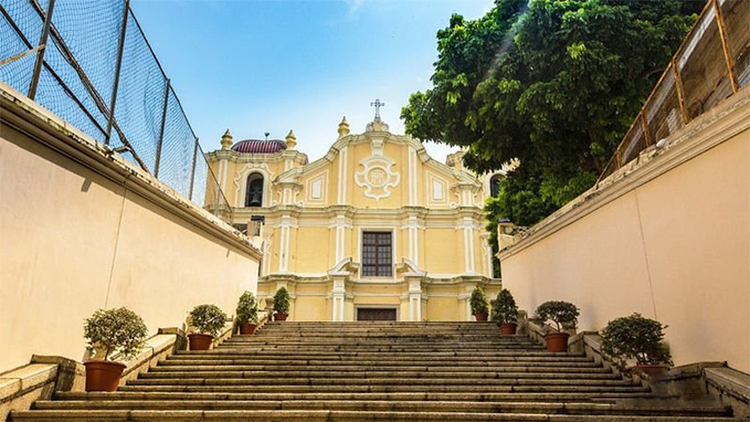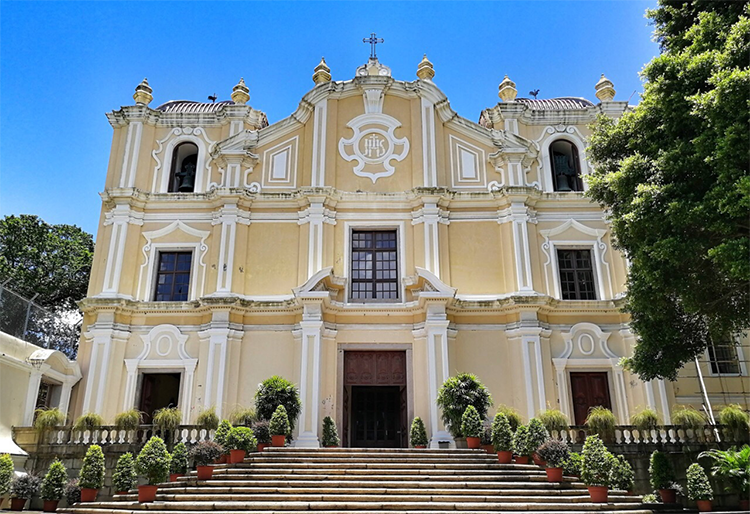Visiting St. Joseph Seminary in Macau: History, Architecture and Practical Tips
Introduction
Hidden in the quiet lanes of Macau Peninsula is a religious and architectural gem that records centuries of East–West encounters: St. Joseph’s Seminary and Church. This 18th‑century Baroque complex is not only a UNESCO World Heritage site within Macau’s Historic Centre, but it also served as a vital Jesuit training base for missionaries to China, Japan and Southeast Asia. Walk the cloisters and nave and you can almost hear the echoes of prayers and lectures from three centuries ago—a living chapter of missionary history in East Asia.
1. Core Character and Spirit
“The cradle of Eastern missionaries”—this phrase captures the spirit of St. Joseph’s Seminary. As the Jesuits’ principal Far East seminary in the 18th century, it trained clergy who went inland across China and to neighbouring countries. It was the Church’s key launching point in Asia.
Unique selling points:
– Baroque architectural treasure: the church’s dome and façade are among Macau’s most impressive religious features, blending European Baroque with local craftsmanship.
– Precious relic: the church preserves the arm bone of St. Francis Xavier, a powerful symbol of Catholicism’s Asian mission.
– Living heritage: the complex still functions for worship and education; Masses and liturgical life continue here.
2. History and Cultural Status
History timeline:
– 1728: Jesuits founded the seminary to train priests for East Asian missions.
– 1758: The church was completed and soon became Macau’s major religious centre after the Ruins of St. Paul.
– 18th–19th centuries: The seminary dispatched many missionaries across China, Japan and Southeast Asia.
– 2001: Listed with the Historic Centre of Macau as a UNESCO World Heritage site; 2005: Received an Asia‑Pacific cultural heritage conservation award.
Religious affiliation and status:
– Part of the Society of Jesus (Jesuits) and one of Macau’s principal Catholic churches.
– Often considered a motherhouse in the region’s Catholic history, comparable in purpose to Rome’s missionary institutions.
Cultural role:
– A sacred site and a microcosm of Macau’s Sino‑Western cultural fusion.
– Local Catholics still celebrate baptisms and weddings here, preserving its active religious traditions.

3. Architecture and Art Highlights
Style and symbolism:
– Baroque features: curved façades, ornate details and a dome symbolizing a call to heaven.
– East–West craftsmanship: European dome techniques built with local materials and Chinese artisanship.
Interior spaces and light:
– Main dome: sunlight filters through high windows, casting a warm glow on the gilded altar.
– Cloisters: 18th‑century stone slabs remain underfoot; footsteps seem to whisper history.
Key areas:
– Church: the high altar is dedicated to St. Joseph; a side chapel displays the St. Francis Xavier relic.
– Seminary: historically a theological college; parts now host exhibits on missionary history.
Art and treasures:
– The arm bone relic of St. Francis Xavier—among the most significant Catholic relics in East Asia.
– Baroque altarpieces: gilded woodcarving alongside Portuguese azulejos (painted tiles).
4. Religious Life and Visitor Experiences
Participating in liturgy:
– Mass schedule: Sunday services in Portuguese and sometimes English; visitors may observe quietly.
– Candles and offerings: candles are available at the entrance for devotional use.
Special experiences:
– Organ and sacred music: occasional concerts feature Baroque liturgical music.
– Crypt visits (when open): the burial vaults of early missionaries can be visited during special openings, offering a solemn, intimate atmosphere.

5. Atmosphere and Visitor Profile
– Typical visitors: devout worshippers, history buffs and architectural photographers.
– Ambience: solemn yet peaceful, with fewer crowds—ideal for reflection.
– Setting: located at Largo do Bom Parto, the site is shaded and quieter than central tourist zones.
6. Suggested Visit Plan
– Recommended time: 1–2 hours (allow more if attending Mass or viewing exhibits).
– Best purposes: cultural exploration, architectural photography, spiritual reflection.
– Nearby route suggestions:
– Morning: St. Joseph’s Seminary → Dom Pedro V Theatre → St. Augustine’s Church.
– Afternoon: Walk toward the Ruins of St. Paul’s to complete a Macau religious architecture circuit.

7. Practical Tips
– Dress code: modest clothing advised; no sleeveless tops or shorts (shawls available at the entrance).
– Photography etiquette: silent and non‑flash photography usually permitted; respect worshippers.
– Opening hours: generally 10:00–17:00 (parts of the seminary open on a limited schedule).
– Languages: Portuguese and English signage; some staff speak Cantonese and Mandarin.
– Fees and payment: admission is free; donation boxes accept cash and mobile payments.
8. Local Insights
– Best light: early morning or late afternoon when the dome catches slanted sunlight.
– Hidden viewpoint: the second‑floor cloister offers a quiet overview of the church interior.
– Cautions: avoid engaging with street fortune‑tellers nearby and maintain silence inside the church.

9. Practical Information
– Name: St. Joseph’s Seminary and Church (Seminário e Igreja de São José).
– Address: Largo do Bom Parto, São Lázaro (Macau).
– Getting there:
– Bus: Routes 9, 16 or 28B to the “Largo do Bom Parto” stop.
– Walk: about 10 minutes from Senado Square.
Conclusion
St. Joseph’s Seminary and Church is both an architectural masterpiece and a living chronicle of Christian mission in East Asia. Here the splendor of Baroque design meets restrained Eastern sensibility, and a legacy of faith continues to inspire. For anyone seeking to understand Macau’s role as a cultural crossroads, this site is essential.


